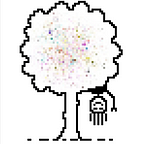Remembering the forgetting curve
🔔 — Ebbinghaus wants to send you push notifications — 🔔
Everyone knows this existential angst when realizing that {xyz}, which we learned only {xyz} time units ago, is already blanked off our mind.
How do some people just remember everything?
Turns out that it’s just about consistent work (as with most things in life). Being awesome at remembering is actually not that difficult.
So… where do all those ________ spots in our recently polished minds come from, and what can we do to fill them up?
Probing the leaking mind
In ____, a _____ ______ named ________ Ebbinghaus did his research and came up with data for a very interesting and influential graph called:
When seeing this graph for the first time, a lot of people are mildly shocked.
That’s a lot of forgetting and it happens very quickly.
But everyone has taken a ride on the steep and speedy slope of the forgetting curve, so there’s nothing to deny. Thanks for drawing it out, Ebbi!
But don’t despair — there’s green lines on the horizon (see the graph above)! As humans, we rarely learn something once and then just know it. That’s not how our minds are made up — and for good reasons! Imagine forever remembering everything that you’ve thought or encountered only one time.
😮 =💥. Literally.
So that’s why we sift and discard.
It’s only worth to remember something when it keeps affecting you more than just once. When something comes around again and again, then it’s probably worth to get out the permanent brain marker and scribble a note onto our spongy internal whiteboard.
Spaced Repetition
What Ebbinghaus famously investigated was the spacing of repetition that yields optimal results for remembering. It essentially goes like this:
At first you need to revisit more frequently, then in ever more receding time intervals. At some point the information is there to stay.
So: studying flashcards actually works — if you keep the intervals in mind. Some smart people developed a few algorithms to make the tedious task of remembering to remember to study in order to remember — haaaaaa! deep breath! — much easier.
If you want to give it a try, ANKI is very powerful and relatively easy to use. Keep in mind, though, that this is just for remembering — in order to learn something, you’ll need to understand it first.
I did a few experiments using spaced repetition systems for studying code. I learned a lot in the process of creating the flashcards, and stuck some essentials to my biological neural nets through revisiting with a spaced-repetition system. It’s very powerful for learning new languages as well, and a staple for med students who need to memorise large amounts of information.
Reflection for learning 🎉
What I personally find interesting, is how it ties into the suite of reflective actions that make learning much more effective:
- feedback
- self-review (reflection)
- repetition (practice)
- mentoring
I’ve experienced all the above points as crucial factors for learning and improving — both on a professional as well as on a personal level.
However, I think it’s easy to become lazy about any and all of these four points and stop the learning process after understanding an idea. Sometimes even before that, especially when it’s about studying for a test… 😳
So I find it important to remind myself that actually learning something is more than understanding it. It doesn’t stop once you got it. There’s work that needs to be done to get to that high point of 🤔AHA!🤓, and there’s more work to be done to move the 🤔AHA!🤓 into permanent actionable memory.
Spaced repetition systems, such as ANKI, are a great tool to help remembering pieces of information, and can successfully be used to counteract the forgetting curve.
If you found this article worthwile, please give me a clap:
This helps me understand that I’m doing something useful for others. :)
And if you are interested in learning python programming with me while traveling the world, check out my company where we do just that.
